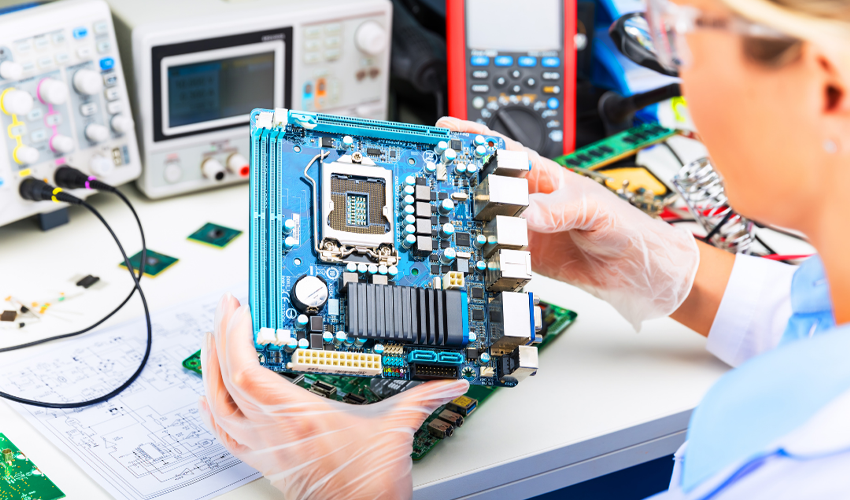
The ongoing global semiconductor shortage is getting worse at the worst possible time – when consumer demand for electronics and automobiles are at an all time high. Even while semiconductor manufacturers work to increase production, soaring demand for electronic devices will continue to outpace the supply of the chips used to bring them to life.
And experts say the crisis isn’t going to end anytime soon.
Intel CEO Pat Gelsinger has stated that the global chip shortage is likely to last two more years, according to published reports.
Forrester vice president and research director Glenn O’Donnell noted in his recent blog that the semiconductor chip shortage could last through 2022 and into 2023. “Data-center spending will resume after a dismal 2020, and edge computing will be the new “gold rush” in technology,” O’Donnell stated in his blog. “Couple that with the unstoppable desire to instrument everything, along with continued growth in cloud computing and cryptocurrency mining, and we see nothing but boom times ahead for chip demand.”
In fact, global sales of semiconductors reached $123.1 billion during the first quarter of 2021, an increase of 3.6% over the previous quarter and 17.8% more than the first quarter of 2020, according to the Semiconductor Industry Association (SIA).
The Chips are Everywhere
Let’s face it, chips are everywhere. They power products you use everyday, like home appliances, such as your microwave, coffee maker, refrigerators and washing machines, to even children’s toys, air conditioning systems, and home security video cameras. That means that the global chip shortage will likely trickle down and seriously impact the availability of these everyday products as well.
“Semiconductors have a powerful ripple effect on products in other markets,” O’Donnell notes. “If the chip supply is tight, these other products suffer delays or even cancellations.”
It’s no surprise that experts are now calling chips, the “new oil” – extremely valuable, exceedingly harder to obtain, yet packs quite the punch in terms of its global impact and scale. According to a recent Forbes article, demand for chips has now outpaced oil mostly due to the pandemic, citing a report from investment research firm TS Lombard.
Rory Green, an analyst at TS Lombard, wrote in his report that the “rapid acceleration of the internet of things forever moves semiconductors ahead of oil as the world’s key commodity input for growth. The current severe chip shortage halting automotive production underscores the speed and scale of this change.”
Green also noted that most chip manufacturing has shifted to Asia, stating Taiwan and Korea account for 83% of global processor chip production and 70% of memory chip output. “Like OPEC was for oil, Taiwan and Korea are near-monopoly producers of chips,” Green wrote.
What’s in the Works
But there is a silver lining at the end. Actions are currently underway to counter the shortage and increase chip production in the U.S.
Intel announced plans to invest $20 billion to increase its manufacturing capacity by building two new factories in Arizona. The plan looks to position Intel as a major provider of foundry capacity in the U.S. and Europe to serve customers globally and answer demand for more semiconductor manufacturing.
President Biden also recently met with top CEOs from the semiconductor, automotive, electronics, and tech industries in a virtual summit to talk about the chip shortage and ways to secure our supply chains. During the meeting, Biden held up a silicon wafer and stressed the need to build a more resilient supply chain for semiconductors in the U.S.
“Chips, like the one I have here – these chips, these wafers, are batteries, broadband; it’s all infrastructure. This is infrastructure,” Biden said. “So, look, we need to build the infrastructure of today, not repair the one of yesterday. And the plan I propose is going to create millions of jobs, rebuild America, protect our supply chains, and revitalize America’s manufacturing. And it’s going to make America research and development a great engine again.”
Biden has also called for support for his $2 trillion infrastructure plan, which includes investing $50 billion in U.S. semiconductor manufacturing and research. “For too long as a nation, we haven’t been making the big, bold investments we need to outpace our global competitors. We’ve been falling behind on research and development and manufacturing. And to put it bluntly, we have to step up our game,” Biden said.
One of the key takeaways of the meeting was to increase transparency in the semiconductor supply chain to help mitigate current shortages and improve demand forecasting to prevent future challenges, the White House said in a statement.
Moving Forward, Full Steam Ahead
So it looks like things are moving in a forward direction. All of these actions in the past few months are clear indicators that plans are in place to strengthen and secure America’s supply chains, prevent future bottlenecks, and significantly bolster U.S. semiconductor manufacturing, design and research. While these recent developments are definitely promising, it’s still going to take some time before any traction is seen.
Experts note that it could take up to two years or more to construct new factories or fabs.
The best course of action is that famous saying, “keep on and carry on.” Work closely with your trusted distribution/supply chain partner to create a plan to manage and navigate any risks. Assess your current inventory to determine what parts you need.
A distributor offering a diverse supply chain – from authorized to independent lines – can help you optimize and build your inventory, especially during this time of disruption and uncertainty.